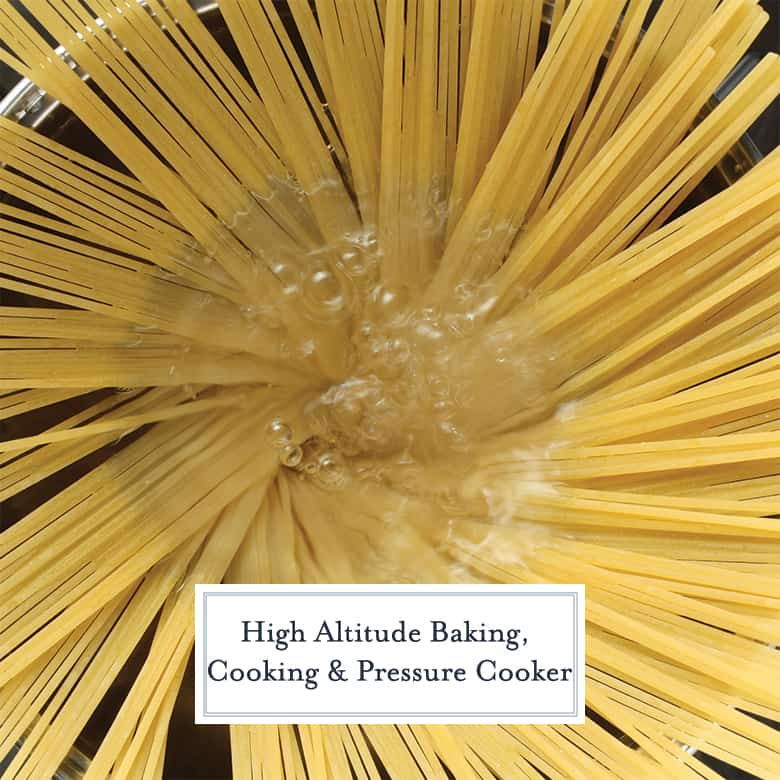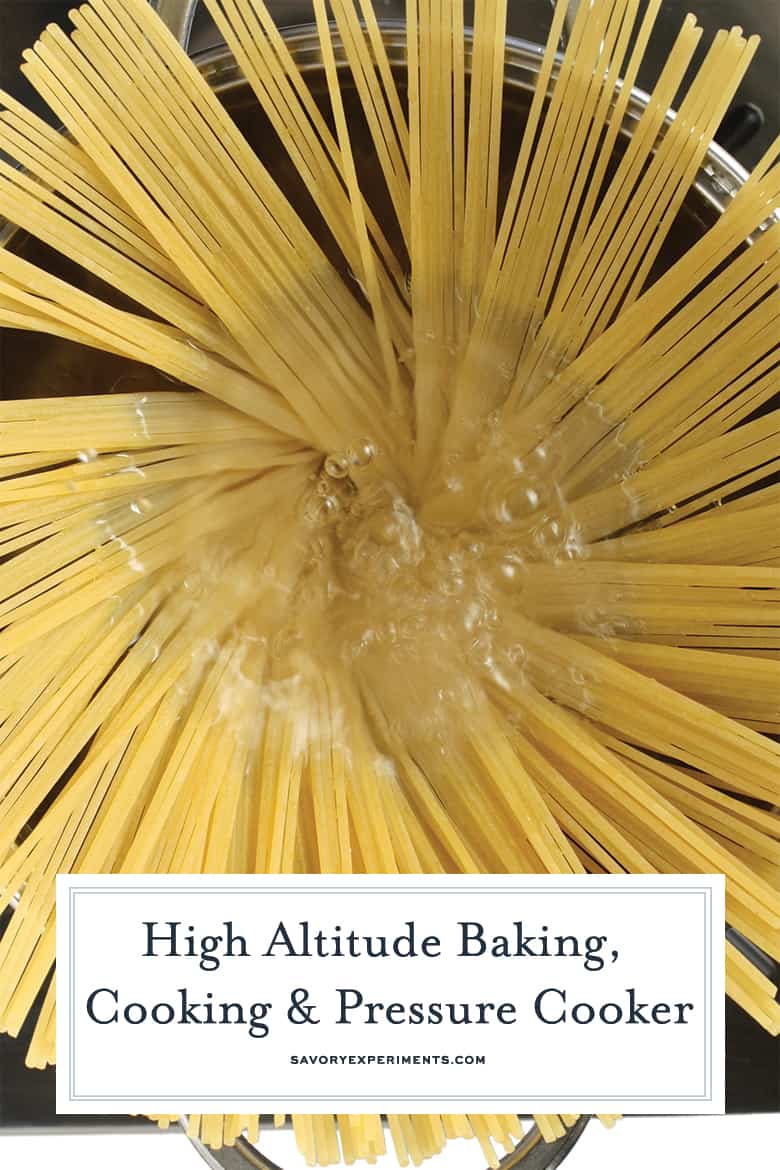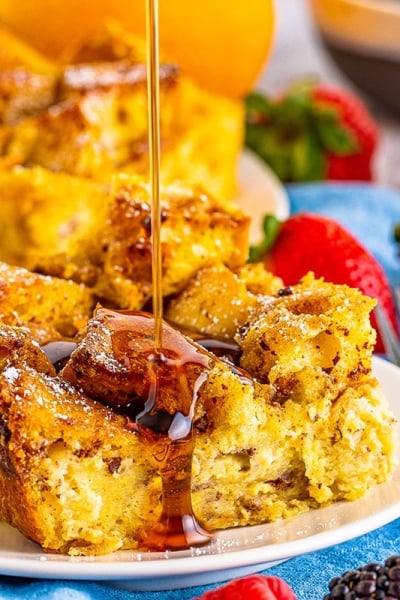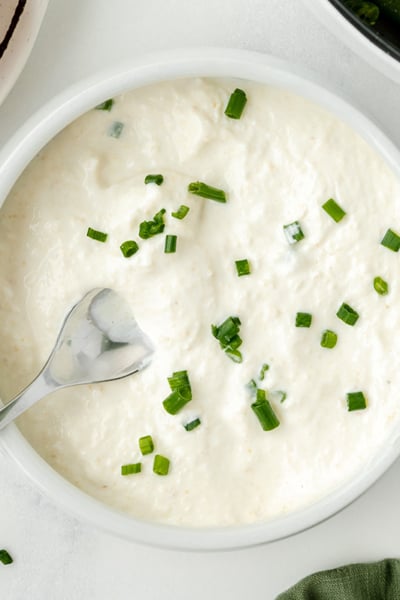As someone who was born in Colorado, I am no stranger to seeing an extra set of instructions on the side of a box of say biscuit mix, mac and cheese, or sheet cake mix.

Why, you ask? Whelp, Denver sits over 5,000 feet above sea level and that means the air in Mile High City is quite literally different.
Make sure you PIN this High Altitude Cooking Guide!
For all of you that are science averse, I will skip the long, drawn out explanation and give you the broad strokes. The main thing to know is that the air is thinner and there is less air pressure.
This might seem innocuous but it impacts a lot of tasks in the kitchen from boiling water to baking bread. But don’t worry, it isn’t all that difficult to navigate once you know a little more about it.
Generally speaking, the recipes you read online, in books, or on the back of boxes (you never know when or where inspiration will strike,) are written and tested for those of us living at sea level. Those recipes are great as is.
You really only need to start thinking about changing things at the 2,000-3,000 feet mark. That is when the air starts to get thin enough to meddle with your cooking and baking, but fear not, it isn’t that painful.
Pressure Cooker & Instant Pots at High Altitudes
When it comes to pressure cookers or our beloved Instant Pots, you might think that you are fine to keep doing what you do as usual, but that is incorrect.
Most experts agree that for every 1,000 feet above a 2,000 foot elevation, the cooking time should be increased by 5 percent. Here is our handy calculator so you can easily calculate the cooking time needed.
Pressure Cooker High Altitude Calculator
Time
High Altitude Baking
There are a few rules of thumb when it comes to getting your cake on in high places. It might require a bit of tinkering and research, but it isn’t too overwhelming to find the right baking time.
- The air is thinner and the air pressure lower meaning your biscuits are going to take longer in the oven than they normally do. It might also mean increasing your oven temp slightly. It might be a good idea to bake one off before you do the whole batch to test things out.
- Liquids like your milk, eggs, etc. will evaporate more quickly. The amount of dry goods you use – read: flour, sugar, etc – may need to be changed to prevent a batter that is too moist or to dry.
- Gasses will expand more at higher altitudes and that means if you are baking bread or making a yeasted cake, your dough is going to rise more quickly than usual. Expect that your rising time will need to be shortened. Leavening agents like baking soda or baking powder may need to be decreased to account for this.
Your best bet in high altitudes in terms of baking and forgiveness when you are still learning the ropes are pie crusts, cookies, muffins, biscuits, and scones. They are less finicky and a good place to start.
High Altitude Cooking & Boiling Water
Stovetop and oven cooking is also affected by elevation. I am guessing at this point, that is no surprise to you.
Basically, the process will simply take a little more time. This is due to the air pressure being lower. You may also need to increase the temp in the oven and or the flame on your stove top.
The same thing that happens in baking in terms of your liquids evaporating faster happens in regular cooking as well. When it comes to meat which is 75% water, you best keep a close eye on things to prevent it from drying out.
For things like chicken or pork chops, a brine should help keep things nice and moist. For steak and fish, I would suggest a bit more oil and/or butter. As we all know, butter makes everything better.
Water boils at a lower temperature (crazy, right?!) That exact temperature is based on your precise altitude. It goes down a single degree for every 500 feet above sea level you go.
For example, water boils at 212F at sea level. If you are cooking at 2,000 feet above sea level, your water will boil at 208F. This means that pasta you need to cook off or those eggs you want to poach may take longer than they would normally.
There you have it. The basic guidelines for how cooking in places above sea level can be a bit different. It might take a little getting used to, but it will become second nature in no time.
Using Microwaves at High Altitudes
You may also notice a difference using a microwave at higher altitudes. Microwaves cook by exciting the water molecules in food, so you might need to add a few seconds to your cook time here as well.
Frying at High Altitude
Frying is also impacted by elevation, deep-fried foods tend to burn on the outside but are undercooked on the inside. Every food will vary, but the stand adjustment is to lower the temperature of the oil three degrees for every 1,000 feet in elevation.
It doesn’t sound like much, but might make all the difference.


















